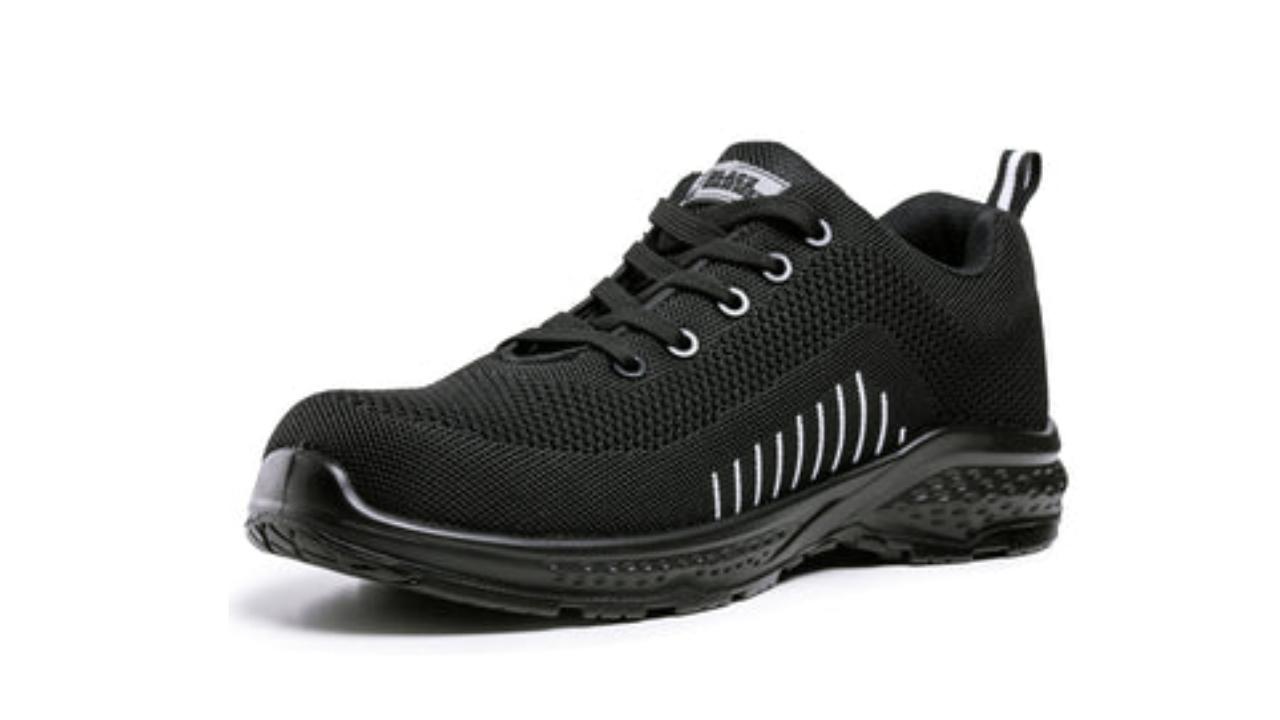Workplace safety ranks high when your job involves risks. That’s where the importance of wearing the right footwear comes in.
Footwear, especially trainer safety shoes, has become a game-changing factor for comfort and protection during long shifts.
But the question remains unanswered: Are you choosing the right trainer safety shoes?
Here, we explore trainer safety shoes, their benefits, key features to look for, and some tips for choosing the right fit for you.
Let’s get started!
Understanding Trainer Safety Shoes
Trainer safety shoes, often referred to as safety trainers, combine the features of traditional trainers with safety elements essential for hazardous work environments. These shoes are designed to offer both style and protection, making them a popular choice for workers across different industries. With their athletic appearance and sturdy construction, trainer safety shoes blend comfort, functionality, and safety.
Benefits of Trainer Safety Shoes
Investing in high-quality trainer safety shoes offers several benefits:
Protection:
The primary purpose of safety shoes is to protect feet from workplace hazards, such as falling objects, sharp debris, and slippery surfaces.
Comfort:
Unlike traditional safety boots, trainer safety shoes offer a more lightweight and flexible design, enhancing comfort during prolonged wear.
Style:
With their sporty design and modern aesthetics, trainer safety shoes allow you to maintain your personal style while adhering to safety regulations.
Versatility:
Trainer safety shoes are suitable for a wide range of industries and environments, from construction sites to warehouses to manufacturing facilities.
Key Features to Look For
When shopping for trainer safety shoes, there are several key features to consider to ensure you’re choosing the right pair:
Safety Standards
Look for shoes that meet industry safety standards, such as EN ISO 20345:2011 for Europe or ASTM F2413 for the United States. These standards specify requirements for protective footwear, including impact resistance, compression resistance, and sole puncture protection.
Toe Protection
Most trainer safety shoes come with reinforced toe caps, typically steel or composite materials, to protect against impacts and compression injuries. Ensure the toe cap provides adequate room for your toes while offering sufficient protection.
Slip Resistance:
Slip-resistant outsoles are essential for preventing slips and falls, especially in environments with wet or oily floors. Look for shoes with outsoles designed to provide superior traction on various surfaces.
Comfort:
A comfortable fit is crucial for all-day wear. Look for trainer safety shoes with features such as cushioned insoles, breathable linings, and padded collars and tongues to minimize discomfort and fatigue.
Durability:
Choose shoes made from high-quality materials that can withstand the rigors of your work environment. Reinforced stitching, abrasion-resistant uppers, and durable outsoles contribute to the longevity of your footwear.
Electrical Hazard Protection:
Opt for shoes with electrical hazard (EH) protection if you work around electricity or electrical equipment. These shoes are designed to reduce the risk of electric shock by providing insulation against electrical currents.
Finding the Right Fit
Proper fit is essential for both comfort and safety regarding trainer safety shoes. Here are some tips for finding the right fit:
Measure Your Feet:
Have your feet measured professionally to determine your correct size. Remember that your feet vary in size, so measure both feet and choose the size that accommodates the larger foot.
Try Them On:
You should always try the shoes before buying them. Walk around in your shoes and see if they are comfortable enough. Also, check if they provide adequate support.
Consider Socks:
Wear the socks you typically wear to work when trying on safety shoes to ensure the best fit. This will help prevent any surprises when you wear them on the job.
Check for Proper Clearance:
Ensure there is enough room in the toe box for your toes to move comfortably without feeling cramped. At the same time, the shoes should not be too loose or too tight around the rest of your foot.
Conclusion
Choosing the right trainer safety shoes is essential for ensuring your safety and comfort in the workplace. You can select footwear that meets your needs and requirements by considering key features such as safety standards, toe protection, slip resistance, comfort, durability, and fit. Remember to prioritize safety without compromising on style or comfort, as the right pair of shoes can make all the difference in your overall well-being and productivity on the job.
